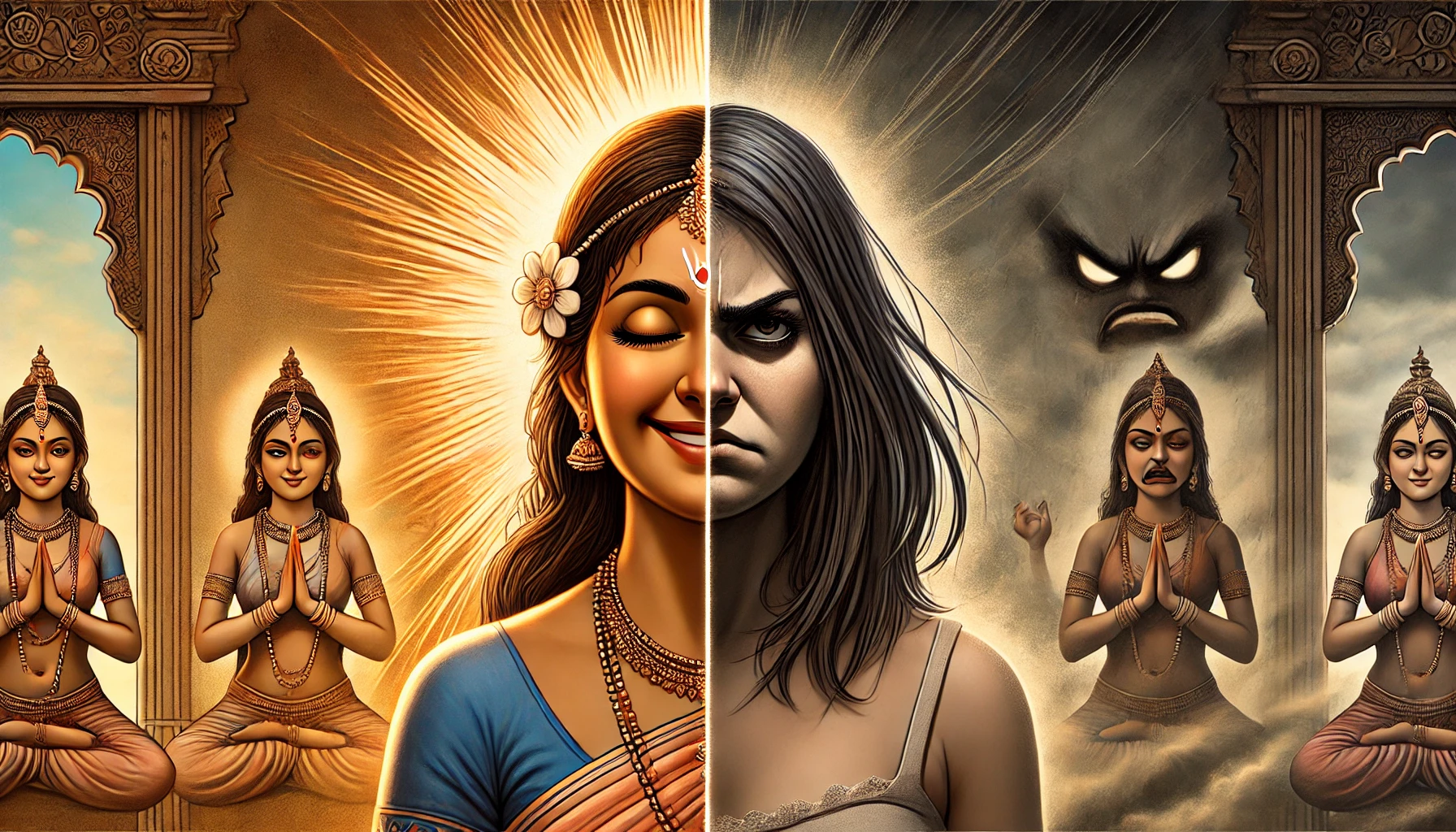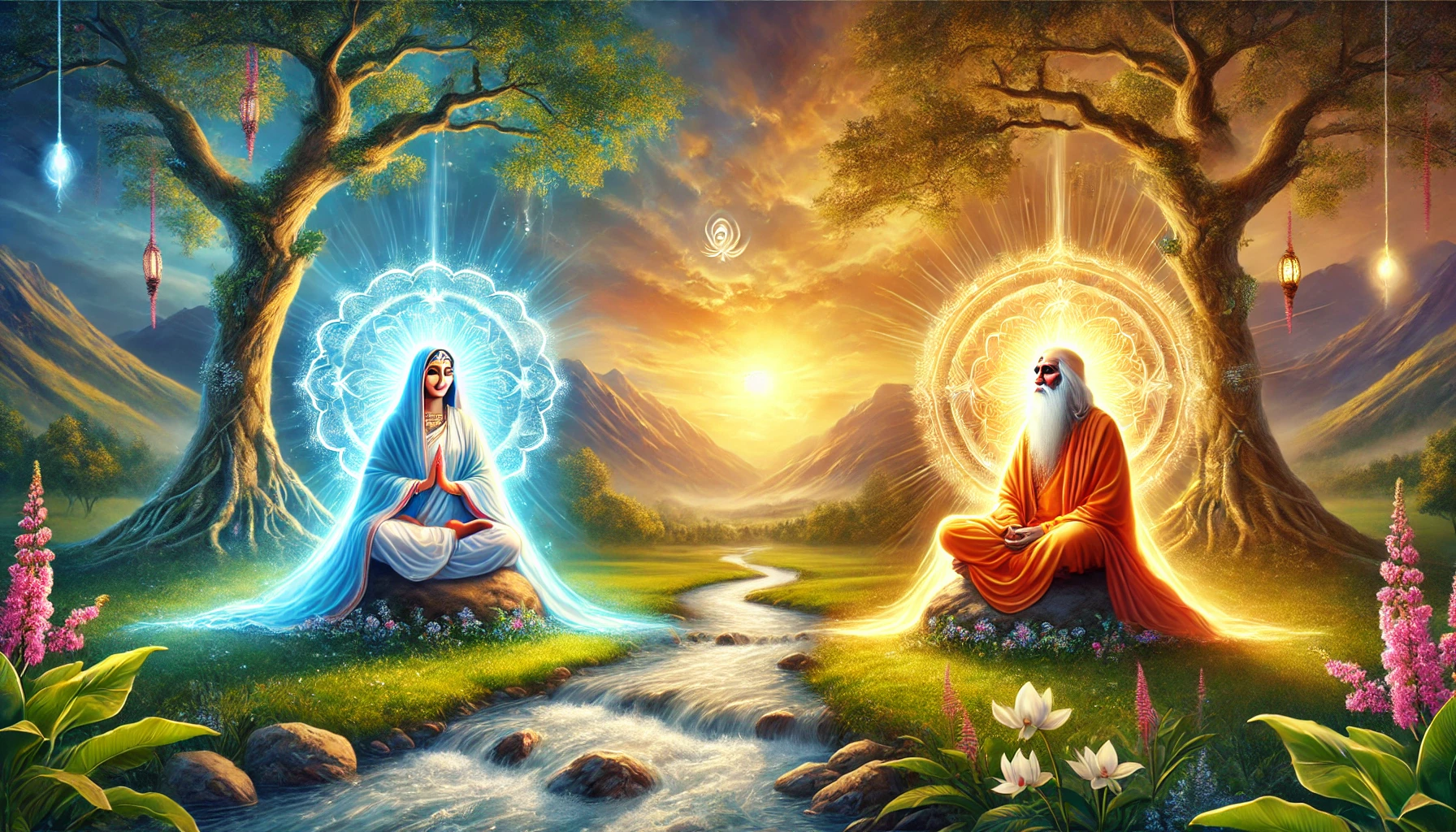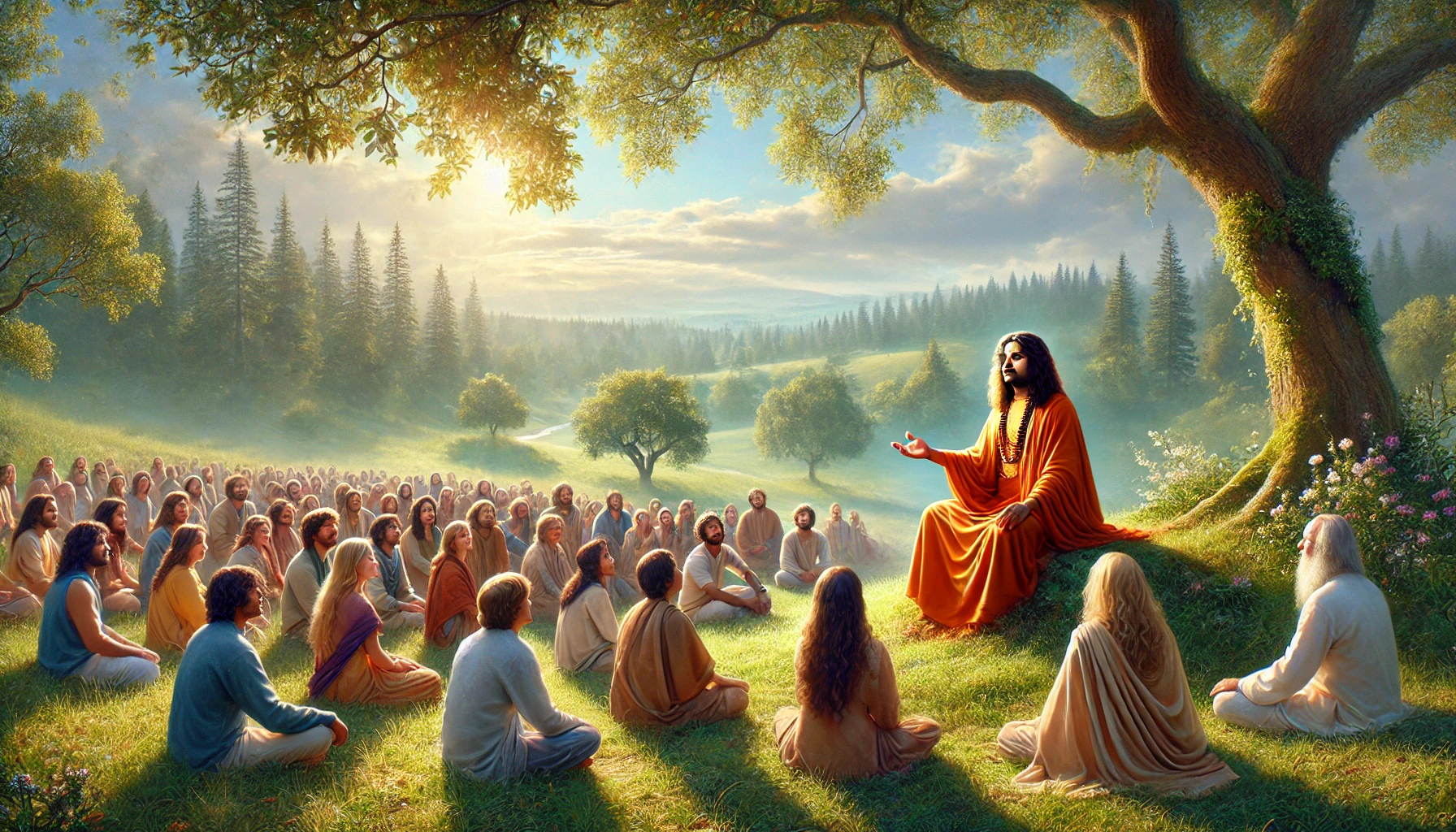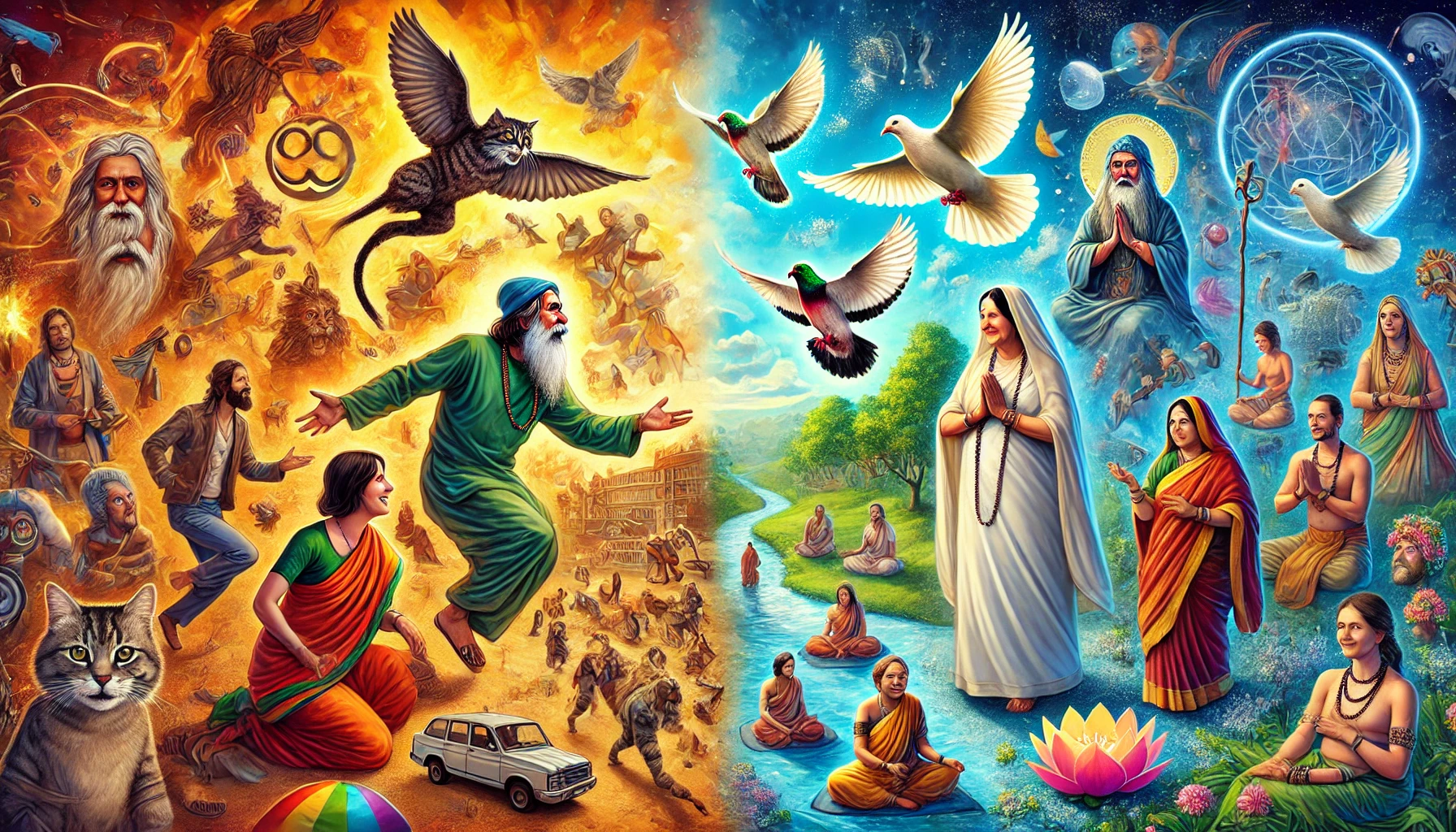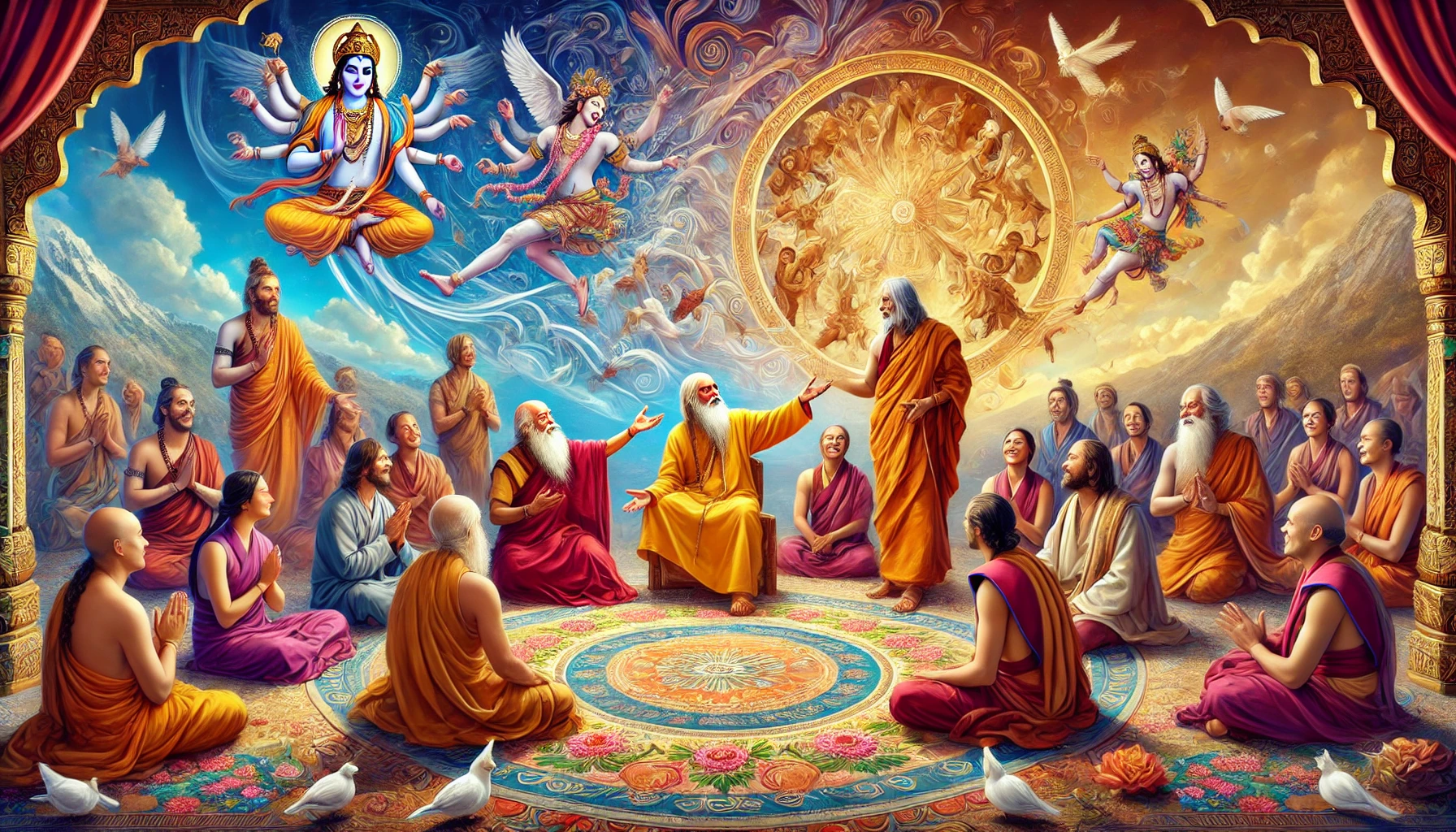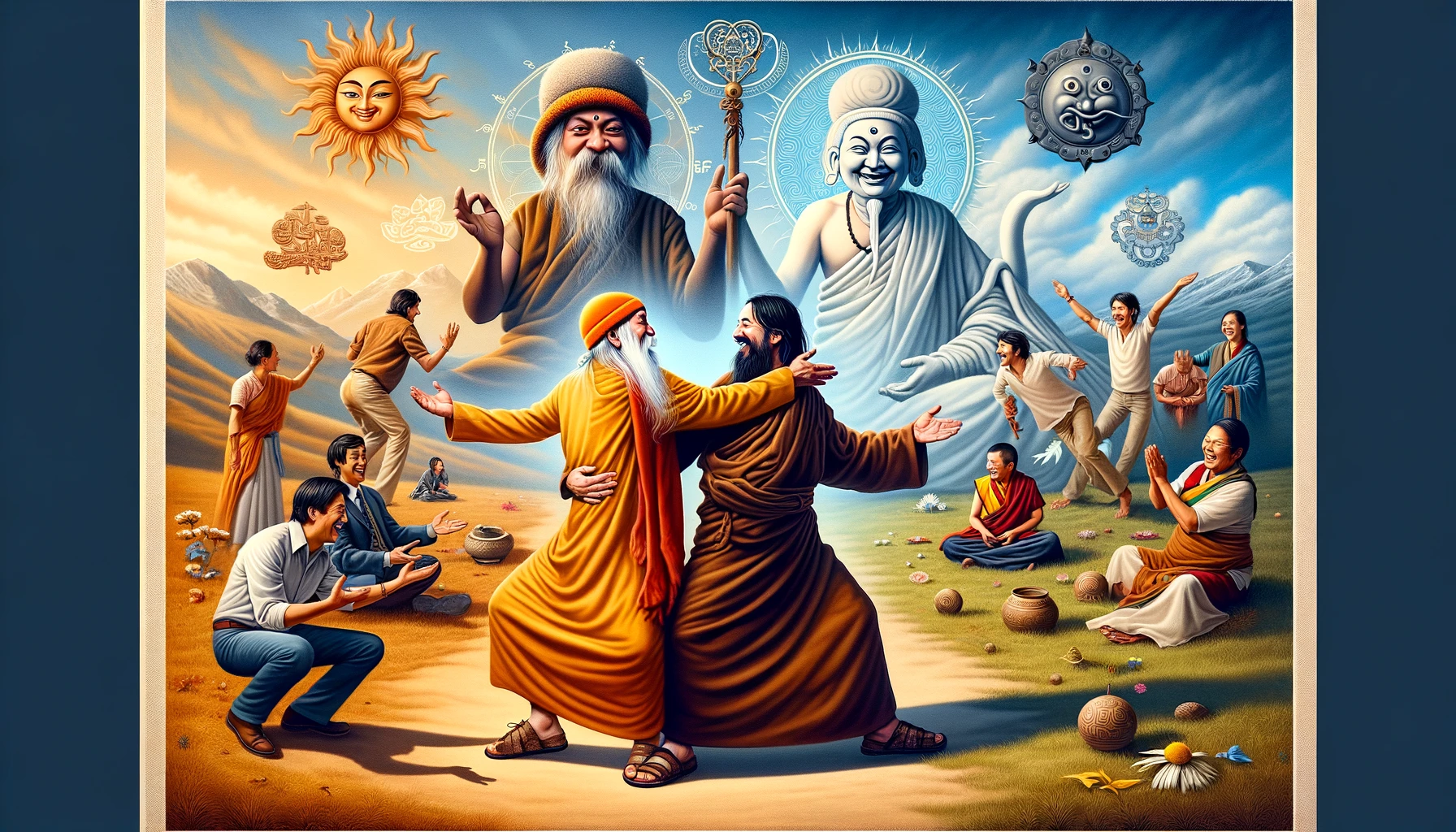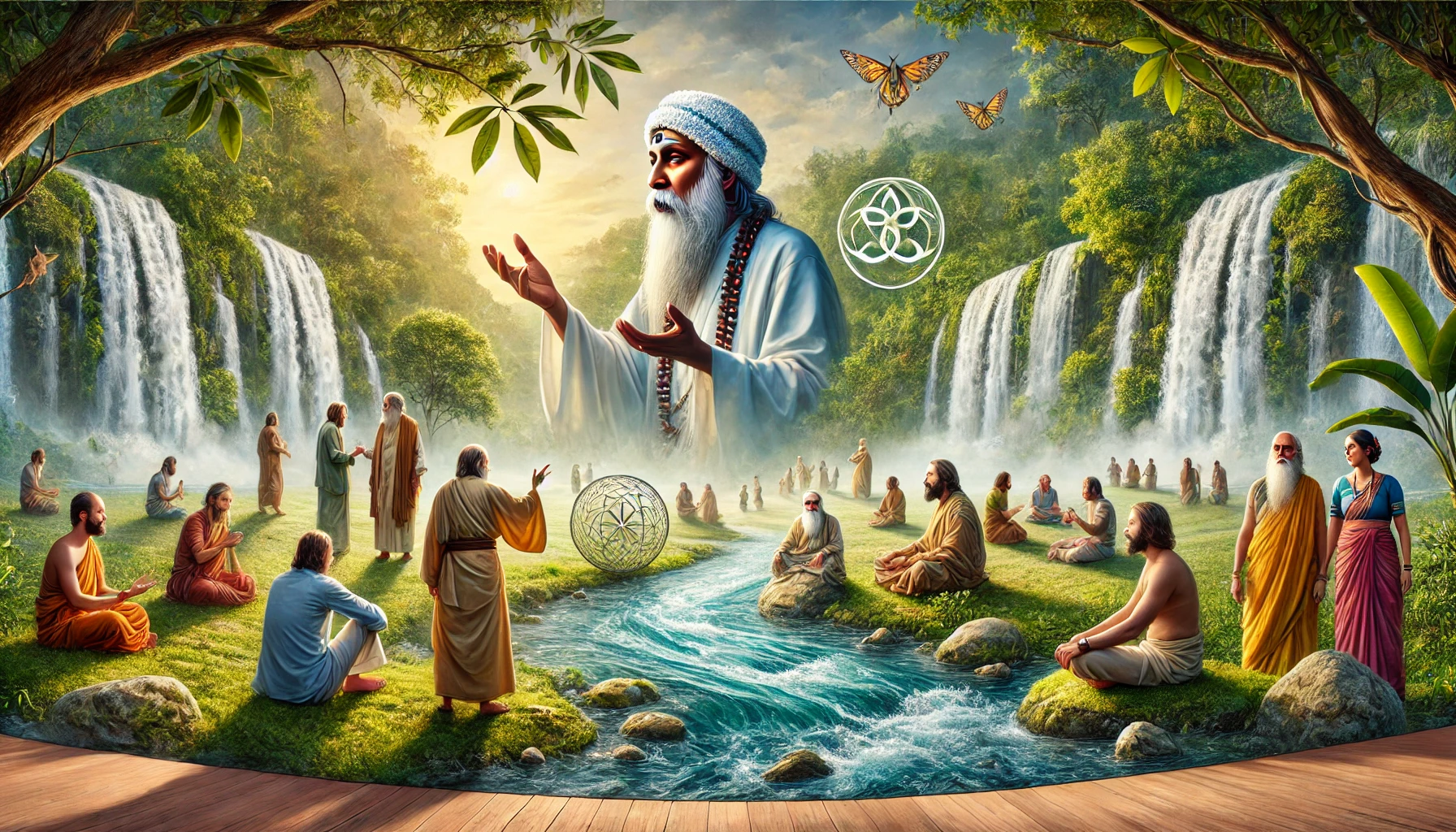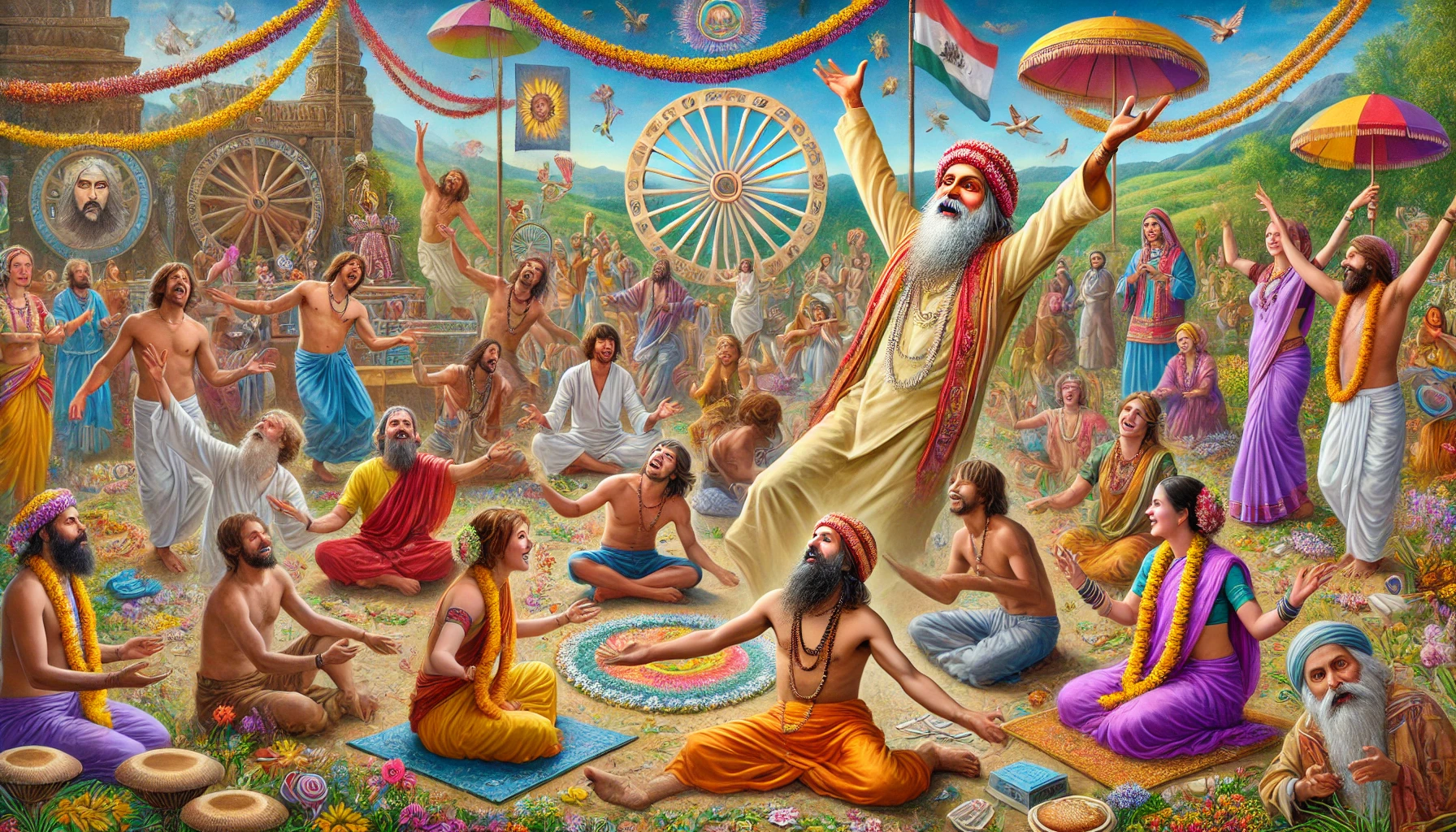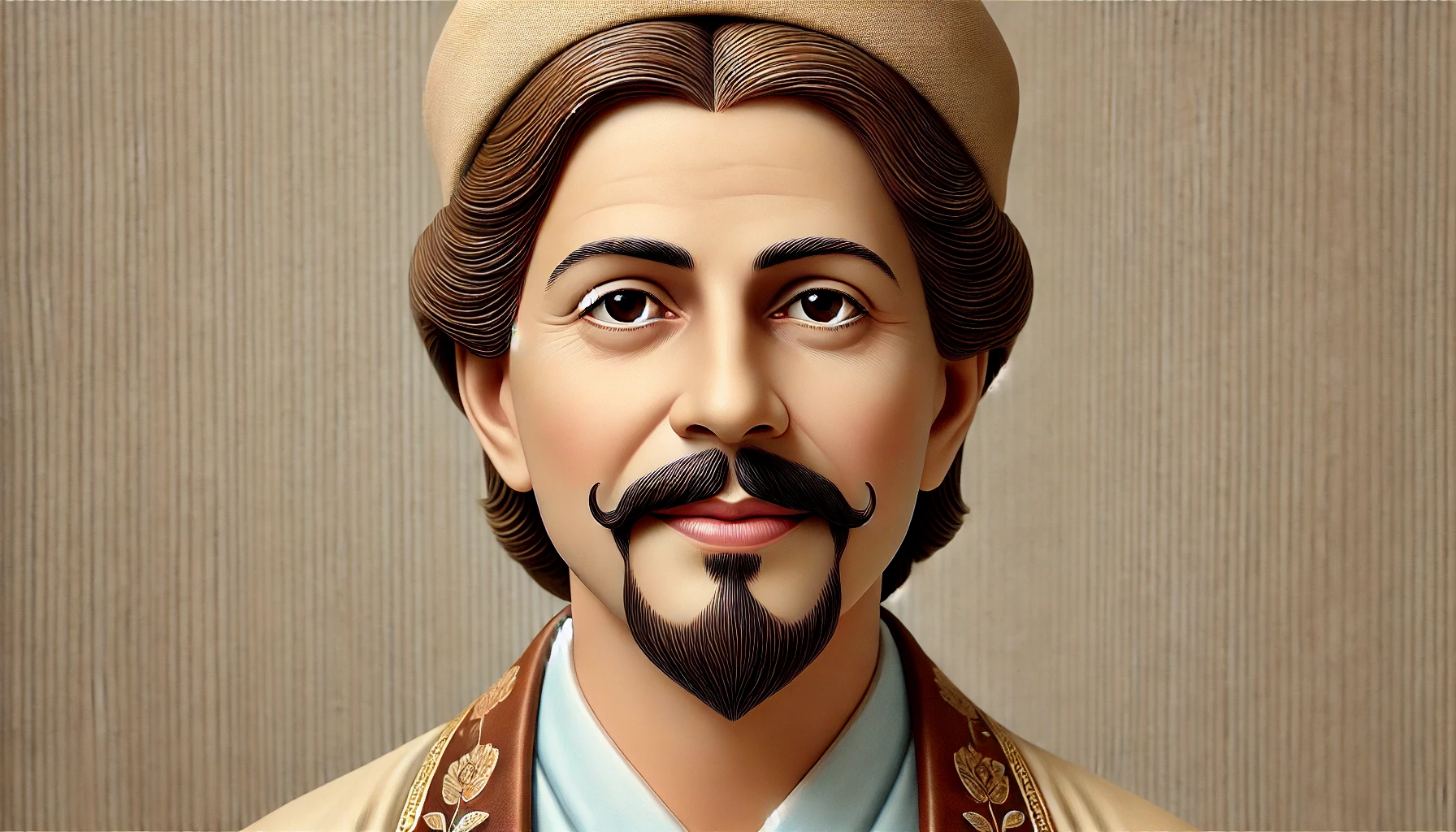
Deep Dive into Meher Baba’s Teachings
Meher Baba’s teachings are a rich tapestry of wisdom, compassion, and spiritual insight, woven with threads of love, humility, and the profound understanding of human nature. His philosophy, though simple in its essence, offers a deep and transformative path for those willing to explore its depths.
This lovely man gave all of himself to humanity, continuing to represent love and compassion to everyone who came near to him. It’s quite remarkable when The Universe supports such a profound soul to birth onto the planet and into our lives. All we need to do is listen, accept, and dive deeply into ourselves to allow their divine teachings to penetrate and transform us.
Let’s delve further into the core principles of Meher Baba’s teachings, which continue to resonate with seekers of truth across the globe.
The Journey of the Soul
At the heart of Meher Baba’s teachings is the journey of the soul. He described the soul’s journey as a process of evolution and involution, beginning with the initial creation and moving through various stages of consciousness until it realizes its true nature. This journey, according to Meher Baba, is the story of every soul’s return to God, the source of all existence.
Meher Baba outlined seven stages of spiritual evolution, known as the “planes of consciousness.” These planes range from gross consciousness, where the soul identifies with the physical body and the material world, to the highest state of God-realization, where the soul merges with the infinite and experiences its true divine nature. This path is not linear but cyclical, with the soul often experiencing lifetimes of progress, regression, and eventual enlightenment.
The Illusion of the Ego
Central to Meher Baba’s teachings is the concept of the ego, which he viewed as the primary obstacle to spiritual growth. The ego, or false self, is a construct of the mind that creates a sense of separation from God and others. It is the source of all desires, attachments, and suffering. Meher Baba taught that overcoming the ego is essential for realizing one’s true self.
He emphasized the importance of self-awareness and introspection in this process. By observing one’s thoughts, emotions, and actions without judgment, individuals can begin to dismantle the ego’s hold on their consciousness. This practice of self-observation leads to greater clarity and a deeper understanding of one’s true nature, ultimately paving the way for spiritual liberation.
The Power of Love
For Meher Baba, love is the most powerful force in the universe and the key to spiritual transformation. He often spoke of the importance of cultivating divine love, which he described as selfless, unconditional, and boundless. Divine love transcends personal attachments and desires, leading to a profound sense of unity with all beings.
Meher Baba’s own life was a testament to the power of love. His interactions with followers, his humanitarian efforts, and his enduring silence all stemmed from a deep wellspring of love and compassion. He encouraged his followers to express this love through acts of kindness, service, and self-sacrifice, seeing each act as a step closer to realizing the divine within.
The Practice of Silence
Meher Baba’s vow of silence is one of the most distinctive aspects of his spiritual practice. For 44 years, he communicated through gestures and an alphabet board, using silence as a means to convey his teachings. This silence was not merely an absence of speech but a profound statement on the limitations of language in expressing spiritual truths.
He believed that true understanding and transformation come from direct experience rather than intellectual comprehension. Silence, in this context, becomes a powerful tool for deepening one’s inner connection with the divine. By embracing silence, individuals can tune into the subtle energies and insights that lie beyond the reach of words.
The Role of the Master
In Meher Baba’s teachings, the role of the spiritual master is paramount. He viewed the master-disciple relationship as a sacred bond that facilitates the disciple’s spiritual growth. The master, having realized God, serves as a guide and catalyst, helping the disciple navigate the complexities of the spiritual path.
Meher Baba often spoke of the importance of surrender and obedience to the master. This surrender is not a passive act but an active engagement with the master’s guidance, which helps to dissolve the ego and awaken the disciple to their true nature. He emphasized that the master’s love and wisdom are instrumental in transforming the disciple’s consciousness and leading them to self-realization.
The Unity of All Religions
One of the most inclusive aspects of Meher Baba’s teachings is his emphasis on the unity of all religions. He saw all faiths as different paths leading to the same ultimate truth. He respected and honored all spiritual traditions, encouraging his followers to practice their own faiths with sincerity while recognizing the common spiritual foundation they all share.
Meher Baba’s inclusive approach is particularly relevant in today’s world, where religious divisions often lead to conflict and misunderstanding. His teachings remind us of the underlying unity that connects all beings and the importance of fostering mutual respect and harmony among different spiritual paths.
Living a Life of Service
Service to others is a cornerstone of Meher Baba’s teachings. He believed that serving humanity is a direct expression of divine love and a powerful means of spiritual growth. Meher Baba’s own life was marked by numerous acts of service, from caring for the sick and feeding the hungry to providing education and shelter for those in need.
He taught that selfless service helps to dissolve the ego and open the heart to the divine. By focusing on the needs of others, individuals can transcend their own desires and attachments, experiencing a deeper connection with the universal spirit. This practice of service, coupled with love and compassion, is a powerful path to spiritual awakening.
Deepening Our Understanding of Meher Baba’s Teachings
The Cycle of Life and Death
Meher Baba’s teachings on life and death provide profound insights into the nature of existence and the soul’s journey. He explained that if a person dies in an accident or due to an unexpected event before their natural death, they will immediately be reborn to complete the remaining time of their previous life. This period, he noted, could range from a few days to several years, depending on how much life was cut short.
Baba’s original quote:
“If a person dies by a sudden accident before his natural death, he immediately takes birth again and completes the remaining time of his past life, after which he dies. Some live for one, two, three, four or five years; and after finishing the remaining period of their past life, they take another body according to the Samskaras of the life which ended suddenly by accidental death. However, they cannot live longer than it takes to complete this remaining time. This is why some children die — some in a few days, some in a few months, and some after a few years.”
This teaching sheds light on why some children die young, either after a few days, months, or years. According to Baba, they are simply completing the remaining time of their past life before moving on to a new body, guided by the Samskaras (impressions) from the life that ended suddenly. This perspective emphasizes the continuity and purposefulness of each soul’s journey, regardless of how abrupt or tragic an individual’s death might seem.
Samskaras and Their Influence
Samskaras, or the impressions left by past actions and experiences, play a critical role in Meher Baba’s teachings. These impressions shape the circumstances of our current and future lives. The concept of Samskaras aligns with the idea of karma, suggesting that our present actions and their ethical quality leave lasting imprints that influence our destiny.
Baba taught that understanding and resolving these Samskaras are essential for spiritual progress. The process involves recognizing our past influences, learning from them, and ultimately transcending them through spiritual practices and the guidance of a realized master. This journey of overcoming Samskaras is part of the soul’s evolutionary path towards realizing its true divine nature.
The Importance of Love and Compassion
At the core of Meher Baba’s teachings is the principle of love, which he described as the essence of all spiritual life. Love, according to Baba, is not merely an emotion but a profound state of being that connects us to the divine and to each other. He emphasized that true love is selfless, unconditional, and boundless, transcending personal attachments and desires.
Baba’s life was a living testament to his teachings on love. He often said, “Love God and find Him within – the only Treasure worth finding.” This directive encourages us to look beyond the physical world and to seek a deeper connection with the divine presence within ourselves and others. By cultivating love and compassion, we can dissolve the barriers created by the ego and experience the unity of all life.
The Practice of Silence
Meher Baba’s prolonged silence is one of his most notable practices. For 44 years, he communicated through an alphabet board and hand gestures, using silence as a powerful spiritual tool. Baba believed that silence allows one to go beyond the superficiality of words and connect with the deeper truths of existence.
His silence was not an escape from the world but a profound engagement with it on a different level. It invited his followers to listen more deeply, to attune to the subtle vibrations of the inner world, and to realize that true communication transcends verbal expression. For modern seekers, practicing silence can be a way to cultivate inner peace, deepen self-awareness, and connect with the divine essence within.
Selfless Service and Humility
Meher Baba taught that selfless service is a direct expression of divine love and an essential aspect of spiritual life. He encouraged his followers to serve others without expectation of reward, viewing such acts as a means to purify the heart and dissolve the ego. Baba’s own life was filled with acts of compassion and service, from feeding the hungry to caring for the sick.
Humility, according to Baba, is another key virtue on the spiritual path. He believed that true humility comes from recognizing our divine essence and the interconnectedness of all life. By serving others and embracing humility, we align ourselves with the divine will and move closer to the realization of our true self.
The Role of the Spiritual Master
In Baba’s teachings, the relationship between the spiritual master and the disciple is paramount. He viewed the master as a guide who has realized God and can lead others towards the same realization. The master-disciple relationship is based on trust, surrender, and love, with the master providing both guidance and the necessary spiritual energy for the disciple’s progress.
Baba emphasized the importance of surrender to the master’s will, seeing it as a way to overcome the ego and align with the divine plan. This surrender is not passive but an active engagement with the master’s teachings and a willingness to undergo the transformative process that leads to self-realization.
Practical Application in Daily Life
Incorporating Meher Baba’s teachings into daily life involves a commitment to self-awareness, love, and service. Practicing self-awareness helps us understand our thoughts, emotions, and actions, allowing us to live more consciously and align our lives with our spiritual goals.
Cultivating love and compassion involves seeing the divine in everyone and everything, fostering a sense of unity and interconnectedness. This can be expressed through acts of kindness, empathy, and service, contributing to the well-being of others and the world.
Finding moments of silence amidst the busyness of life allows us to connect with our inner self and the divine presence within. Whether through meditation, contemplation, or simply being present, these moments of silence help us cultivate inner peace and clarity.
Finally, living with humility and a spirit of service aligns our actions with our highest aspirations, fostering a sense of fulfillment and purpose. By serving others selflessly and embracing humility, we can move closer to realizing our true divine nature.
The Intensity and Controversies Surrounding Meher Baba
Meher Baba, a figure of immense spiritual illumination, lived a life marked by profound intensity and dedication to his divine mission. His prolonged vow of silence, which lasted 44 years, is one of the most striking aspects of his spiritual practice. This silence was not a retreat but a potent form of spiritual work, symbolizing the ineffable nature of true wisdom and the limitations of spoken words. His silence, coupled with his vibrant personality and compassionate deeds, created a magnetic presence that drew followers from all corners of the world, seeking solace and enlightenment.
However, with great influence often comes controversy. Meher Baba’s unorthodox methods and radical teachings occasionally sparked debates and misunderstandings. One of the most ill-founded controversies surrounded his claim of being the Avatar of the Age, a spiritual title signifying a direct descent of God in human form. Skeptics and critics questioned the legitimacy of such a proclamation, viewing it through the lens of their own religious beliefs or scientific rationalism. Despite this, Baba’s steadfast humility and unwavering focus on his mission remained unshaken, continuing to inspire and guide countless individuals.
Another source of controversy was his decision to maintain silence for such an extended period. While many saw this as a profound spiritual statement, others perceived it as an eccentric or even escapist behavior. Critics argued that a spiritual leader should engage verbally with their followers to provide guidance and clarity. Yet, Baba’s silence proved to be a powerful teaching tool, compelling his followers to seek deeper, non-verbal forms of communication and connection with the divine.
Additionally, some of Baba’s actions, such as his “New Life” phase, where he and a small group of disciples lived as wandering mendicants, renouncing all worldly possessions, were seen as extreme. This period, characterized by rigorous discipline and unwavering commitment to spiritual ideals, drew both admiration and skepticism. To outsiders, it appeared as an unnecessary hardship; however, for Baba and his close followers, it was a path to deeper spiritual realization and liberation from material attachments.
Despite these controversies, Meher Baba’s legacy continues to shine brightly. His life and teachings transcend the misunderstandings and skepticism, offering a path of love, service, and inner transformation. The controversies, rather than diminishing his impact, have often highlighted the depth and authenticity of his spiritual journey. Meher Baba remains a beacon of divine love and wisdom, inviting all to look beyond superficial judgments and to seek the profound truths that lie within.
Meher Baba’s Alignment with Advaita Vedanta
Meher Baba’s teachings exhibit a profound alignment with the principles of Advaita Vedanta, one of the oldest and most influential philosophical traditions in India. Advaita Vedanta, which means “non-dual end of the Vedas,” asserts the essential oneness of all existence, emphasizing that the individual soul (Atman) and the ultimate reality (Brahman) are identical. This non-dualistic perspective is central to understanding the depth and universality of Meher Baba’s spiritual message.
The Oneness of All Existence
At the heart of Meher Baba’s teachings is the concept of unity and the interconnectedness of all life, mirroring the core tenet of Advaita Vedanta. He often spoke about the illusory nature of the ego and the material world, urging his followers to look beyond the surface and recognize the underlying divine essence that pervades everything. Baba’s assertion that “God alone is real, and everything else is illusion” resonates deeply with the Advaitic view that the perceived multiplicity of the world is a manifestation of Maya, the cosmic illusion.
The Journey of Self-Realization
Meher Baba emphasized the importance of self-realization, which he described as the process of recognizing and experiencing one’s true divine nature. This journey involves transcending the ego and its attachments, which aligns closely with the Advaita Vedanta practice of Neti-Neti (not this, not that). Through self-inquiry and inner reflection, individuals can peel away the layers of illusion to uncover the truth of their oneness with Brahman.
Baba’s teachings on the soul’s journey through various planes of consciousness also reflect the Advaitic understanding of the progressive stages leading to enlightenment. In both Baba’s philosophy and Advaita Vedanta, the ultimate goal is the direct experience of non-dual consciousness, where the individual soul realizes its unity with the infinite.
The Role of the Spiritual Master
In Advaita Vedanta, the guidance of a realized teacher (Guru) is considered essential for attaining self-realization. Meher Baba, regarded as an Avatar and a perfect master, fulfilled this role for his followers. He viewed the master-disciple relationship as a sacred bond that facilitates the disciple’s spiritual awakening. Baba’s teachings emphasize surrender to the master’s will and the transformative power of the master’s grace, paralleling the Advaitic belief in the Guru’s vital role in dispelling ignorance and leading the seeker to enlightenment.
Silence and Inner Experience
Meher Baba’s prolonged silence can be seen as a practical embodiment of the Advaita Vedanta emphasis on inner experience over intellectual discourse. Advaita Vedanta holds that true knowledge (Jnana) is beyond words and concepts, accessible only through direct, inner realization. Baba’s silence was a powerful statement that the deepest truths of existence cannot be fully conveyed through language but must be experienced directly within one’s own consciousness.
Love and Compassion as Expressions of Oneness
While Advaita Vedanta traditionally focuses on knowledge and realization, Meher Baba integrated these principles with a profound emphasis on love and compassion. For Baba, love is the natural expression of realizing one’s unity with all beings. This aspect of his teachings brings a heart-centered approach to the intellectual rigor of Advaita Vedanta, making the realization of non-duality a living, breathing practice of loving and serving others.
An Embodiment Of The Advaita Vedanta
Meher Baba’s teachings align deeply with the principles of Advaita Vedanta, enriching the ancient non-dual philosophy with his unique insights and compassionate approach. By emphasizing the oneness of all existence, the illusory nature of the ego, and the transformative power of love, silence, and the master-disciple relationship, Baba’s message resonates with the timeless wisdom of Advaita Vedanta. His life and teachings continue to inspire seekers to look beyond the apparent multiplicity of the world and realize the divine unity that lies at the heart of all creation.
Embracing the Essence of Meher Baba’s Teachings
Meher Baba’s teachings provide a timeless blueprint for spiritual growth and inner transformation. They invite us to look beyond the superficial layers of existence and connect with the deeper truths within. By embracing principles of love, silence, selfless service, and humility, we can navigate the complexities of modern life while staying grounded in spiritual principles.
Incorporating these teachings into daily life can be transformative. It begins with small steps: practicing self-awareness, cultivating compassion, and finding moments of silence amidst the noise of everyday life. These practices align our actions with our highest aspirations, fostering a sense of inner peace and fulfillment. Meher Baba’s legacy is a reminder that true spirituality is about living each moment with love, integrity, and self-awareness, ultimately leading us to the realization of our divine essence.
Meher Baba’s teachings continue to inspire and guide those seeking a deeper understanding of themselves and their connection to the divine. Reflecting on his life and message encourages us to embrace these timeless principles and embark on our own journey of self-discovery and spiritual awakening.
In the end, Meher Baba’s message is clear: Love God, love others, and find the divine within. By following this simple yet profound path, we can experience the true essence of our being and live a life of purpose, joy, and spiritual fulfillment. His teachings are a testament to the enduring power of love to heal, transform, and awaken the divine potential within each of us.
Get The Shankara Oracle and dramatically improve your perspective, relationships, authentic Self, and life.


